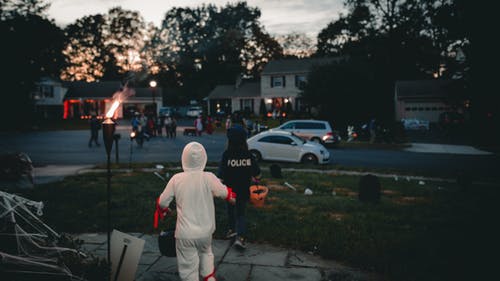Are fewer kids trick or treating in Halton?
Published October 30, 2019 at 1:36 am

With Halloween right around the corner, you might be wondering how much candy you’ll need to pick up to ensure you don’t run out early, and find your house covered in raw eggs in the morning.
With Halloween right around the corner, you might be wondering how much candy you’ll need to pick up to ensure you don’t run out early, and find your house covered in raw eggs in the morning.
If you’ve noticed yourself buying less and less candy on Halloween over the last few years, you may be questioning if there are fewer kids going door to door asking for candy.
While the exact numbers are difficult to track, most people are of an agreement that the number of kids who visit them in costume brandishing loot bags and chanting “Trick or Treat” has dwindled over time.
But why is that?
There are several reasons for why you may end up with lots of leftover candy on November 1 this year.
For starters, some parents are choosing to attend events hosted by businesses, as opposed to going door to door and asking for candy. Further, some parents are opting to bring their kids to certain, more festive neighbourhoods—which results in an influx of kids in some neighbourhoods, and a dearth of kids in others.
Some areas have also started imposing more regulations on trick or treating. Certain cities and municipalities have implemented curfews for when kids can and can’t go door to door on Halloween.
One suburb of a town in the U.S. set the accepted trick or treating hours to 2 p.m. to 5 p.m.—before it even gets dark.
So, if your city has imposed new regulations regarding the hours kids can and cannot trick or treat without your knowledge, there’s a possibility you might miss them during your commute home from work (or a last-minute run to the store to stock up on supplies).
In addition to imposing time restrictions on trick or treating, some areas are also imposing age limits on trick or treaters. Because there are many cities adopting these new bylaws, the age ranges vary, usually as low as 12 and as high as 17.
Some people may not care about cities and municipalities imposing restrictions on trick or treating, but it can have adverse effects. For example, imposing age restrictions on trick or treating can lead to an increase in underage drinking, as teens seek out other ways to celebrate the holiday.
Additionally, imposing regulations on trick or treaters doesn’t just impact the kids themselves, it also can impact other members of the community. Many residents in nursing homes and senior care facilities delight in Halloween because it affords them the opportunity to visit and interact with the neighbourhood kids—something that is extra special for residents who don’t get many visitors otherwise.
insauga's Editorial Standards and Policies advertising





